Virtual prototyping of the automotive light
12. Október, 2011, Autor článku: Rekšák Vladimír, Elektrotechnika, Študentské práce
Ročník 4, číslo 10  Pridať príspevok
Pridať príspevok
![]() The contribution brings the thesis in which we deal with design, modeling and manufacturing with help of CA-x (Computer Aided technologies) and application of these procedures in the manufacture of the automotive rear signal light. The work also maps the new technological and design- trends in automotive lighting. This paper summarizes the new technologies replacing traditional incandescent lamps luminaires and also shows the development of specific automotive luminaire using modern technology.
The contribution brings the thesis in which we deal with design, modeling and manufacturing with help of CA-x (Computer Aided technologies) and application of these procedures in the manufacture of the automotive rear signal light. The work also maps the new technological and design- trends in automotive lighting. This paper summarizes the new technologies replacing traditional incandescent lamps luminaires and also shows the development of specific automotive luminaire using modern technology.
1. Background
The automotive industry has seen a large increase in application of LED (light emitting diode), spectacles and light guide technology to cars in recent years. This is particularly the replacement of conventional light sources, which are filament lamps. Some applications do not require the use of diodes, despite their lower energy consumption. It is still true that what is better is also more expensive. Thus, for example in fog lamps, which are not so often used, still use the filament lamps. It is the same for rear light. Using LEDs in these applications would make light unnecessarily expensive.
Conventional incandescent lamps may be substituted for either placing the LED in the newly-calculated reflective surfaces, or suitably adapted plastic. These technologies are much more compact and so designers together with engineers can modify the distribution of reflective surfaces or plastics light tubes in the lamp according to their wishes. The ultimate shape of the lamp gives the whole car its unique look.
2. Reflector systems
Light emitting diodes used in automobiles are the light sources with completely different properties than those of filament lamps. When designing the light, it is necessary to take into account that the diode with a suitably adapted housing radiates light rays in a different direction than filament bulb. Designers therefore have to replace the reflective surfaces in the lamp, which used a modified lamp by reflectors suitable for reflecting light emitted diode or multiple diodes. For the routing of light’s rays are generally used two types of reflector surfaces. The first type are parabolic surfaces, where the rays after reflection from an outbreak link parallel (Fig. 1).
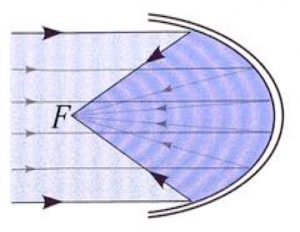
Fig. 1. Parabolic reflecting surface and the direction of reflected light
The second type is elliptical surface, where rays are directed from one focal point to the second focal point after reflection (Fig. 2). Such reflecting surfaces are used in xenon headlamps as well (Fig. 3).

Fig. 2. Eliptical reflecting surface and the direction of diffusion of reflected light
Reflector surface may include facets, something like elementary reflector surfaces, which are conveniently arranged and embedded in the main reflector surface. The main reflector surface’s shape defines the direction of propagation of light and facets define its diffusion.
3. Dioptric systems
Another way to adjust the shape and direction of light rays coming from the diodes is the use of dioptric systems. The lenses can be placed just before the diode redirecting the flow of light in the desired direction (Fig. 4). We can also use a combination of optical elements such as Fresnel lenses and lens filter (Fig. 5). Fresnel lens adjusts the light rays entering it, so that the rays emanating from it are parallel. Stray light filter then suspends light in a desired angle.
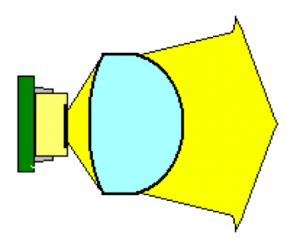
Fig. 4. The use of optical lenses before diode
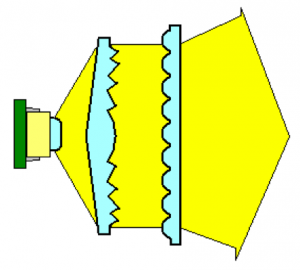
Fig. 5. The combination of Fresnel lenses and lens filter
4. Combined systems

Fig. 3. Using elliptical reflective surfaces and lenses in xenon headlights with a combined optical system with mechatronic aperture.
5. The use of light guides
Another technology used in automotive lamps is light guide technology. It uses excellent optical properties of light guide materials and disseminates the light in them by total reflection of light. LEDs in the lamp are located on the sides of light-guide’s plastic and total reflection ensures that the light is almost evenly spread through the skylight. To make light reflect from the back of light guide into the environment, we need to properly adjust one side of the light guide by precisely calculated notches called balancing beams (Fig. 6).
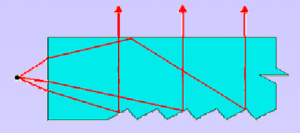
Fig. 6. Principle of light diffusion through outlet prisms
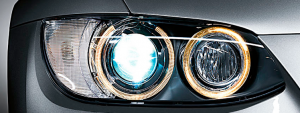
Fig. 7. The use of tubular light guides in the lamp Angel Eyes

Fig. 8. Using the planar light guides in BMW 5
6. Description of the solution
The rear light of Škoda Yeti (Fig. 9) is the object of solution in my bachelor project. We try to design the rear lamp with LED diodes instead of conventional bulbs. We had to find new design of the lamp first, and place the LED diodes to reach the best lighting and make new lamp good looking. The sketches have been created new and new with various arrangements of LED diodes for hours. Also there was very hard to decide from which sketch the virtual model will be made. It started with three or four sketches and gradually we have chosen one which is the last now. We made a virtual model of this lamp after that, in CATIA v5 software.
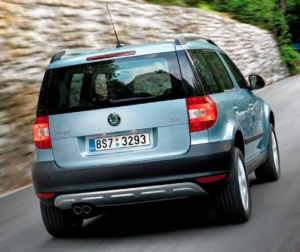
Fig. 9. View of the rear lamps of Skoda Yeti
We have decided to use light guides from plastic (Fig. 10). They are giving flair, emotion and also the robustness to this rear light (Fig. 11; 12; 13).

Fig. 10. Light reflection in light guides

Fig. 11. Design of the new rear lamp using light guides

Fig. 12. Backside of the new light

Fig. 13. Direct view from the back of the light
We will make some modifications of this virtual model later in the diploma project. The solution of the reflections is needed and real lighting of light guides will be computed. Next, we will construct LED holders and proper integration of used LED diodes. I also would like to make a real model using 3D printer machine and make this lamp functional with real LED controller.
7. Conclusion
The truth is that this project will never be used in mass production but the bachelor project gives me a lot: new technical view, new opinions of expert constructers, skills, information about trends in car industry and most other knowledge which is usable in practice.
8. References
- Fric, R.: Konštruovanie a dizajn svietidiel. Prednášky. FEI STU Bratislava 2009.
- Fric, R.: Konštruovanie vyššími CAD systémami. Prednášky. FEI STU Bratislava 2010.
- Kropáč M., Kratochvíl J. : New trends in automotive exterior lighting, In: Svetlo 2009. Light 2009 : 18. medzinárodná konferencia. Jasná, 21.-23.10.2009. – Bratislava : Slovenská svetelnotechnická spoločnosť, 2009. – ISBN 978-80-969403-7-0.
- http://www.skoda-auto.cz/cze/model/yeti/gallery/ pictures/Pages/pictures.aspx
- http://www.bmw.com/com/en/newvehicles/3series/convertible/2007/allfacts/ergonomics/daylight.html
- http://www.displayblog.com/2007/04/16/hella-lighting-up-bmw-5-series-rear-with-leds/
Spoluautorom článku je Ing. Róbert Fric, PhD., Ing. Miroslav Kropáč, PhD., Katedra mechaniky, Fakulta elektrotechniky a informatiky, Slovenská technická univerzita, Ilkovičova 3, 812 19 Bratislava
Práca bola prezentovaná na Študentskej vedeckej a odbornej činnosti (ŠVOČ 2011) v sekcii Aplikovaná mechanika II, ISBN 978-80-227-3508-7

